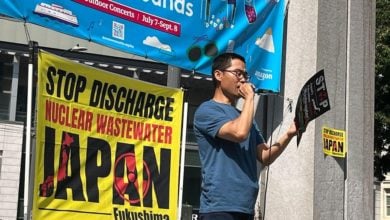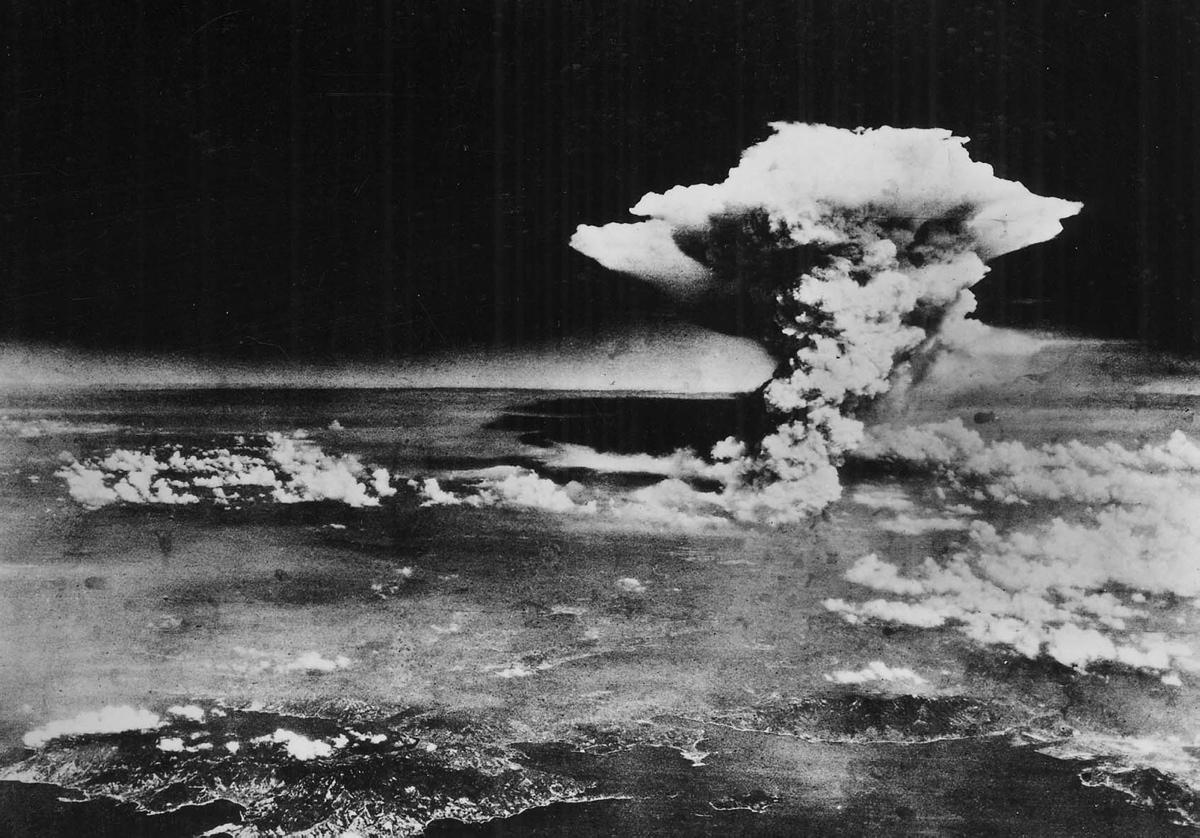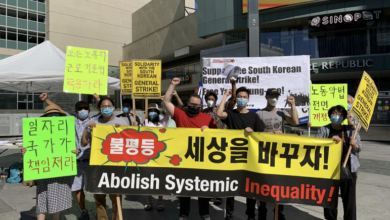Originally posted on Counterpunch.
It made worldwide news when Lee Seok-ki, representative in the South Korean National Assembly, was arrested on charges of treason. South Korea’s National Intelligence Service (NIS) fed media outlets with a transcript of a meeting that Lee attended, which appeared to reveal plans by the Unified Progressive Party to take up arms against the South Korean government in the event of war with the north.
The release of the transcript came at the height of national protests against interference by the NIS in the national election of December 2012. The Unified Progressive Party (UPP) was at the forefront of the anti-NIS demonstrations, and the furor that resulted over the accusations against Lee and the UPP succeeded in stifling mass protests.
In a sense, Lee Seok-ki and his six co-defendants have been tried twice; first in a trial by media, in which inflammatory news accounts based on one-sided details and misinformation provided by the NIS convinced a majority of South Koreans that Lee was guilty as charged.
It appears that the second trial, now underway in a Suwon district court, may yield a quite different result, based on the unravelling of the prosecution’s case.
The two main charges against Lee Seok-ki are conspiracy to take up arms against the government and violation of the National Security Law, which makes it illegal to praise or show sympathy for North Korea. Liberally applied, the law has often been used to suppress dissent and punish political actions that are wholly unrelated to North Korea.
The prosecution’s chief witness is an informer who was paid by the NIS to spy on the UPP. The centerpiece of the case is the set of recordings the informer made at two party meetings he attended in May, 2013.
The informer testified that these meetings were attended by members of a secret subgroup of the UPP named the Revolutionary Organization (RO). Claiming to be a former member of the RO, the witness said he had engaged in “anti-state activities.” Straining credulity, the informer asserted that RO members told him “there was only one leader – Kim Il Sung, and that Lee Seok-ki is the representative of South Korea.” Never mind that Kim Il Sung had long been dead by the time this conversation was alleged to have taken place.
The very existence of the RO is open to question. The UPP declares that there is no Revolutionary Organization, and the entire concept is a concoction of the NIS in order to smear the party. The UPP has maintained from the first that the NIS deliberately manipulated the transcript in order to misrepresent the actual words that had been spoken at the May meetings.
Indeed, there is ample cause for skepticism concerning the reliability of the transcripts. The prosecution submitted 46 audio recordings from various meetings as evidence. Once the recordings were in the hands of the judge, the prosecution reworked the transcriptions in order to produce more accurate results. The transcripts from the May meetings alone contained a total of 272 corrections made to the initial versions the NIS had leaked to the press and which formed the basis for the indictment of Lee and his six co-defendants. More than half of the errors came in the text of Lee Seok-ki’s speech on May 12.
Whether the original inaccuracies could be termed “errors” is another matter. It would be naïve to imagine that it was just happenstance that incorrect wording tended to paint a damning picture of Lee. The inflammatory words inserted into the first transcript caused widespread outrage, providing the pretext for the NIS to raid the homes and offices of the UPP, arrest several of its members, and launch an effort to ban the party.
Consider what a different impression is made by the creative rewording provided in the first transcript. In the first version, the phrase “carrying out holy war” is attributed to Lee, but the recording shows he actually said “carrying out promotion.” Similarly, “oppositional struggle” and the “the subject of this war” in the first transcript contrast with Lee’s recorded words, “antiwar struggle” and “struggle against war,” respectively. Lee’s reference to the Jeol-du-san Catholic Martyr’s Shrine appeared in the first transcript as “shrine for decisive battle.”
Was it an unintentional mishap that the first transcript had Lee announcing “war preparation,” rather than his actual words “specific preparation”? Can it really be said that Lee was calling for an armed uprising when the first transcript’s phrase “Let us carry out decisive war” was shown to be “Let us decide”?
The NIS claims that its dodgy transcript was due to “faulty audio quality and static interference,” but it surely is no accident that the nature of the errors made it more likely that Lee and his co-defendants would be indicted and the UPP defamed.
Many of the audio files the prosecution submitted as evidence were copies. “Much of the original audio files have been deleted,” the defense team pointed out, “so it raises questions about whether or not the copies are the same as the originals. Even if the witness verifies the integrity of the evidence, it cannot be said that its authenticity has been established.”
The prosecution contended that co-defendants Hong Sun-seok and Lee Sang-ho made more than 1,700 calls to suspected RO members during the year and a half preceding the May meetings. The defense countered, “There is no objective evidence to show that the people they spoke with are RO members and no one knows the contents of their conversations.” The defense also questioned the likelihood that members of an underground organization would use cell phones to communicate.
Actions by the NIS may have given the prosecution an unfair advantage in the conspiracy trial. The NIS conducted a series of raids on the homes and offices of the UPP and affiliated organizations, and in the November 14 raid on one group, the NIS confiscated a secure digital card containing the defense team’s legal strategy. Two weeks later, the NIS contacted the defense team and announced that it would remove the seals on the card and told them to come. A defense team member reports, “After removing the seal, they didn’t immediately return it, but connected it to a computer and posted the materials on the screen; then took pictures of the documents with a digital camera.” The defense team protested that the materials were for defense counsels only and dealt with the conspiracy trial, “but the agents continued to take photos.”
The NIS claims that it deleted the photos on the camera in front of the defense team, but data recovery software can retrieve deleted digital photos. Screen recording software could also have been installed on the computer. There was nothing to stop the NIS from capturing that information if it chose to do so. The behavior of the NIS throughout the entire affair does not inspire confidence in that organization’s good will. The defense called the actions by the NIS “a complete violation of the defendants’ right to defense and the rights of the defense counsels that could lead to the dismissal of the charges.”
In a further violation of the rights of defense, Lee Seok-ki is kept under constant CCTV surveillance and was not allowed access to counsel except in the presence of the prosecution.
Much of the government’s case relies upon the strength of the paid informer’s testimony, and cross-examination by the defense has demolished his credibility. The defense contended that the informer’s deposition was prewritten by the NIS and did not represent his actual testimony. According to records, the deposition lasted 3 hours and 25 minutes, followed by 25 minutes of review and questions. The defense argued that it was not possible to write 97 pages of deposition in such a short time and review and sign 142 pages of a report in 25 minutes. The defense questioned the informer: “Did the NIS agents prewrite the deposition?”
The informer admitted, “They did prewrite it.” The deposition the prosecution attributed to the informer in fact represents the words of the NIS. In reply to the question of the time being too short to handle the volume of material, the informer replied: “I was familiar with the content, so I speed-read it just to check for any errors.” Nevertheless, it was the NIS that supplied that content.
Nor has the informer’s testimony inspired confidence. The conclusion by the witness that the May 12 meeting was held by the Revolutionary Organization was based solely on his judgment that security was tight. There was no other indication that a secret group was meeting. If strict security is sufficient evidence of a secret revolutionary group, then one encounters such groups with each trip to the airport.
One of the main features of the informer’s testimony was the term “single line double tracking,” describing the organization’s internal security structure. The witness assumed the RO had adopted this approach based on what he had read of past national security cases. He merely extrapolated from those unrelated cases.
The witness frequently changed his testimony. Initially, the informer claimed that Lee Seok-ki announced that it was “time to prepare for revolution, a decisive moment.” During cross-examination, the witness admitted that Lee had never uttered those words.
There is even a lack of evidence for the name “Revolutionary Organization.” The defense asked the witness, “You testified that when you first joined RO, you had ‘probably heard’ the name RO from someone named Do. What did you mean ‘probably’?” The informant answered, “At the NIS, they asked if the organization name is RO and I said ‘probably RO’.” In other words, it was the NIS that supplied the name Revolutionary Organization to the informer.
The witness also admitted that his earlier testimony that the RO had four regional branches was his assumption and, despite having claimed that he heard the RO platform, he had in fact never heard it. The witness repeatedly reversed himself and acknowledged that a large portion of his earlier testimony was based on his assumptions.
The informer also conceded that his testimony regarding the structure of the RO was based on his experience and in watching the breakout groups at the May 12 meeting. He had no direct knowledge of the structure of the RO. The informant testified to the existence of an RO central committee. Asked by the judge if he had heard from anyone directly regarding its existence, the witness answered, “I never heard from anyone directly. When I heard that Wang-jae-san is a ‘shabby organization without a central committee,’ I thought it’s possible that we have one.” He assumed the existence of a central committee merely because the activists seemed well-organized.
In a preposterous statement, the witness said that he could tell who is an RO member merely by looking at the person. Indeed, the only evidence the prosecution had to offer that the RO even existed was the testimony of the informant, and that was was proving an embarrassment.
In the assessment of lead defense attorney Kim Chil-jun, “The informant assumed the role of a NIS contractor and collaborated with the NIS to actively meet people and entrap them to say certain things. Rather than provide objective and truthful information on an actual situation, he infiltrated for the purpose of investigation, choreographed the situation, and then submitted that as evidence. After drafting an exaggerated activity report, he then immediately submitted that to the NIS.”
In regard to the evidence the NIS claimed to have on the RO, Kim observes, “It has been revealed that they were all either based on the imagination of the informant or fiction based on his knowledge of other high-profile national security cases.” As for the existence of the RO, “There is no evidence beyond the testimony of the government informant. Even what might be considered evidence is either contradictory or absurd.”
Based only on a few words, Kim said, “The government informant basically imagined this entire scenario.” No resolutions came from the breakout sessions on May 12, nor could the informer know what was being said at the six other sessions taking place simultaneously with the one he attended. There is no evidence of decisions being taken to launch a rebellion. Asked whether there was any discussion following the breakout sessions on a plan of action or a resolution, the government informant replied, “No, I don’t remember.”
The defense will begin presenting its case in January, when it plans to reveal additional information about the extent of fabrication in the government’s case. It is expected that within the next few weeks, the judge will make a determination on the admissibility of the recordings as evidence, and a negative decision would deal another blow to the prosecution case.
At this point, the prosecution has failed to offer evidence to substantiate the charge of conspiracy. The National Security Law, however, is so open to varying interpretations that a conviction on that charge cannot be ruled out. The government is counting on a conviction on at least one charge in order to strengthen the motion it filed with the Constitutional Court for the abolition of the Unified Progressive Party. The Ministry of Justice also plans to try to remove the six UPP members in the National Assembly from office. A successful outcome in either endeavor would trigger wider efforts.
In a growing wave of government repression that includes widespread attacks on unions, the conspiracy trial is an opening salvo in a campaign to remove progressive forces from the political scene. The Ministry of Justice has announced plans to get legislation passed that would grant it authority to disband what it terms “anti-state” groups. “The UPP is just the tip of the iceberg,” one Justice Ministry official revealed, and there are many individuals and groups that the government wants to target.
The fate of democracy in South Korea hangs in the balance. The Right is resorting to the practices of the era of dictatorship, when oppositionists were routinely red baited and repression was used to stifle dissent. An acquittal of the defendants at the conspiracy trial and the failure of the government’s motion to abolish the UPP would foil efforts to delegitimize participation by progressive forces in the political process, and mark a great victory in the Korean people’s defense of democracy.
Gregory Elich is on the board of directors of the Jasenovac Research Institute and the advisory board of the Korea Policy Institute. He is the author of Strange Liberators: Militarism, Mayhem, and the Pursuit of Profit.





